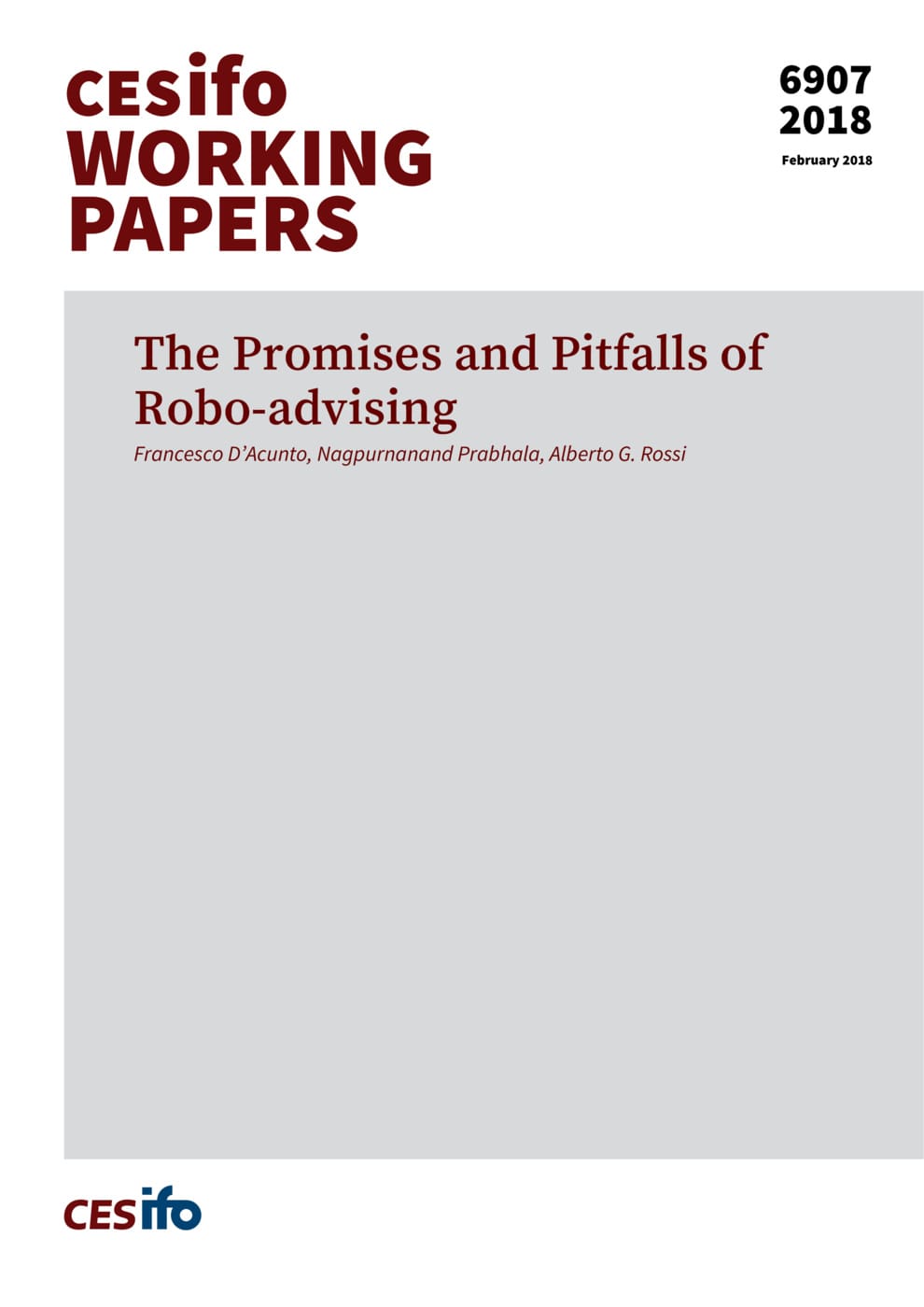The Promises and Pitfalls of Robo-advising
CESifo, Munich, 2018
CESifo Working Paper No. 6907

We study a robo-advising portfolio optimizer that constructs tailored strategies based on in- vestors’ holdings and preferences. Adopters are similar to non-adopters in terms of demographics, but have more assets under management, trade more, and have higher risk-adjusted performance. The robo-advising tool has opposite effects across investors with different levels of diversification before adoption. It increases portfolio diversification and decreases volatility for those that held less than 5 stocks before adoption. These investors’ portfolios perform better after using the tool. At the same time, robo-advising barely affects diversification for investors that held more than 10 stocks before adoption. These investors trade more after adoption with no effect on average performance. For all investors, robo-advising reduces - but does not fully eliminate - pervasive behavioral biases such as the disposition effect, trend chasing, and the rank effect, and increases attention based on online account logins. Our results emphasize the promises and pitfalls of robo-advising tools, which are becoming ubiquitous all over the world.
Behavioural Economics
Economics of Digitization